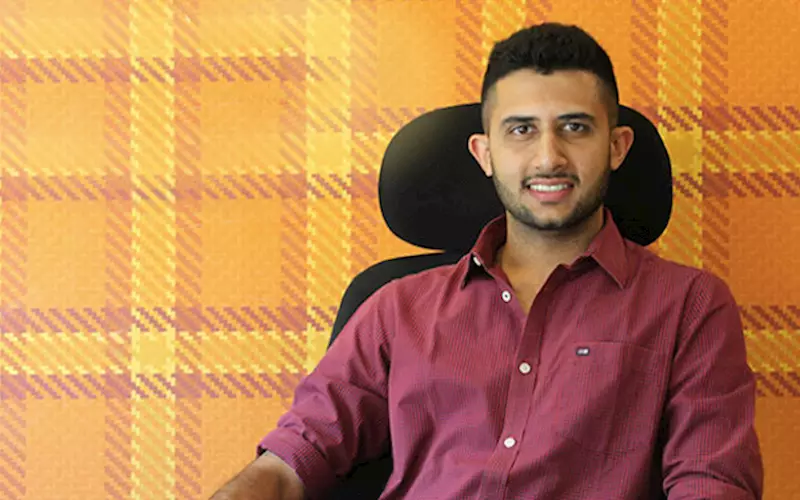Pune's Akruti presents Sonora case study
Pune-based Akruti Offset along with Hyderabad-based Digiflex presented case studies on 6 September during PrintWeek India's webinar in partnership with Kodak India. The theme was “Improve your RoI with the right pre-press technology” and was attended by more than 120 participants.
Sahil Rao of Akruti presented his case study after presentations by Vidhu Gautam of Kodak and K Shyamsunder of Digiflex.
08 Sep 2017 | By Priya Raju
Pune-based Akruti Offset adopted the process-free technology in 2014 and shifted their pre-press operations to Sonora plates.
The adoption of Kodak’s process-free plates by Akruti stemmed from both economic and environmental benefits. At that time, the father and son duo of Girish Rao and Sahil Rao had said to PrintWeek India that the "plates eliminate the processing step required by traditional thermal CTP plates and provide significant energy, water, and waste reductions without requiring printers to make sacrifices on productivity or print capabilities."
Sahir Rao, the second generation at Akruti started his career in print in 2011 after completing his studies from Germany. After working in Germany for a year, he returned to take over the family owned business.
Rao said, "Akruti is a 20 years old commercial print company having 60 people and more than 300 satisfied customers. Our focus has been mainly on brochures, magazines and calendar printing.
Akruti has an in-house facility of pre-press, press and post-press. In the pre-press department, Akruti has invested in the Inkzone Ink Pre-setter (CIP3) connection along with X-rite Easy Trax – online densitometer, with the help of which the team can produce exact colour with minimum makeready time and less paper wastage.
Akruti has also invested in a GMG InkOptimizer software to reproduce sharper images with better colour gamut. It provides with ink-saving potential between 10%-15%.
Rao said, "We invested in a Kodak CTP and Prinergy Workflow in 2014. Having an in-house CTP facility helped us achieve our desired ink profile on paper."
He said, "Preps and Prinergy manage the workflow and data of all the jobs. While refining the files in Prinergy, checking the errors in the file has become very easy for us."
Errors like, said Rao, if the images are in RGB, or it is a low resolution file, or the fonts are missing - are taken care of with Prinergy. It also helps us in cropping the double spread images in the software itself. He stated, "We can have a look of the final imposed PDF in Workshop Panel and also Visual Proof the final plate output."
Rao added, "Prinergy helps us generate the CIP4 data for the machine and can change the dot shapes based on the job. Whereas, Preps helps us with the imposition of the files depending on the binding style for the job. With a click of a button, we can add the crop marks, fold marks and colour strips."
Rao shared Akruti's experience with Sonora plates. He said, "A few months after our investment in Kodak’s CTP and workflow, we started with the trials of Kodak’s Sonora Process Free Technology." This increased the quality and the efficiency of the press.
He mentioned, "Since the time we started using Sonora, we have achieved a higher accuracy and better sharpness in printing. Dot reproduction has also improved a lot." The Akruti team was able to see "a phenomenal difference while printing the vectors or the ink patches which made us adopt this technology."
Akruti started using Sonora on the KBA Rapida 74. After the success of the Sonora Plates, they got rid of the processor and made it a hassle-free process. Akruti was printing varied number of jobs through these plates like real estate brochures, calendars, diaries, paper bags, magazines, cartons, books and so on.
Rao explained, "When it comes to real estate industry, they really require a very high quality job. As discussed, choosing the latest technology is critical for increasing the quality and the efficiency of our press. Our magazine clients are also really happy with this change."
He took special care to explain that "Sonora is a very easy to use technology. Many of us think that it has storage issues but it is exactly like a processed thermal plate. No extra care is needed."
Finally, Rao mentioned, most of the commercial printers have small run jobs and their plate consumption is very high compared to the others. In this sense, he felt, "Sonora helps you save a lot of time with the plate processing and helps you increase your production.
When it comes to processing, a print firm saves:
Water – almost 50 litres of water per day
Chemicals – complete elimination of harmful chemistry
Electricity – 1500+ units (kWh) per month
These three elements, Rao reinstated, are the biggest reason that also makes the Sonora-CTP eco-system an eco-friendly plate technology.
In 2017, other than a successful three years journey with Sonora, Akruti entered into a new venture, Unbox Packaging which focuses on customised packaging boxes. Unbox offers luxury packaging and enables its client's design and produce exquisite packaging which includes stationery, wedding card, gift boxes, LED boxes among others.
Watch PritnWeek India Awards webinar part I and II:
Building a sustainable and green environment for packaging convertors (Part I) - https://goo.gl/b5xU4M
Improve your RoI with the right pre-press technology (Part 2) - https://goo.gl/VSHKhK














 See All
See All